Mountains have long been symbols of awe and mystery, and some of the most remote ranges in the world take this to an entirely new level. These isolated landscapes, often far from human civilization, offer peaks that look and feel like they’re from another planet. Whether it’s the jagged spires of the Andes or the misty cliffs of the Zhangjiajie Mountains in China, each range offers its own unique blend of beauty and challenge. In this article, we explore some of the world’s most otherworldly mountain ranges, each with its own distinct features and allure for adventurers.
The Brooks Range, Alaska
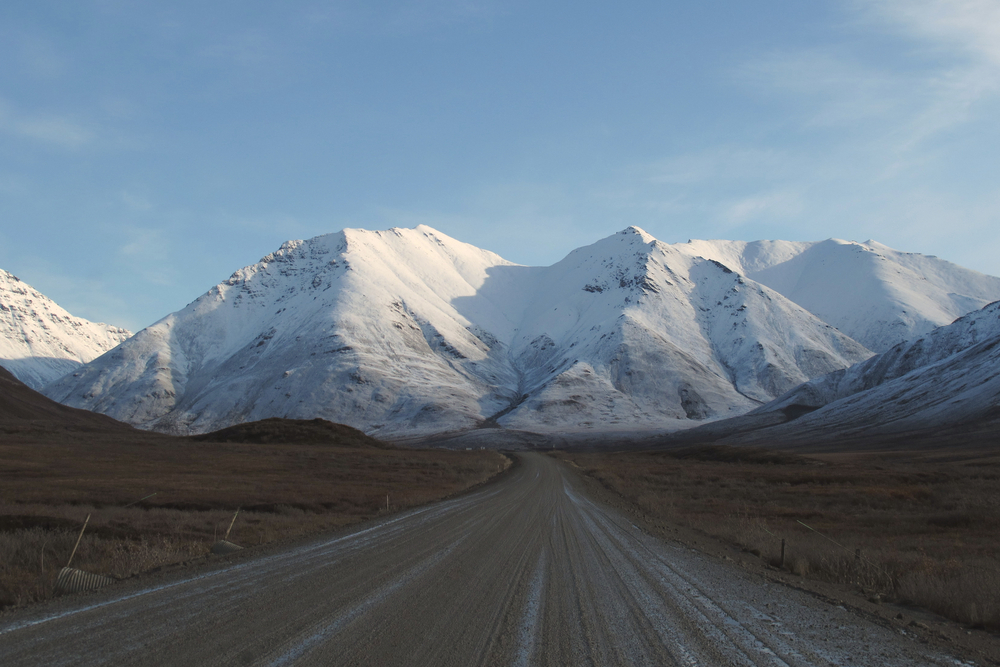
The Brooks Range stretches over 700 miles through northern Alaska, offering a rugged and remote escape into nature. This mountain range is home to peaks like Mount Chamberlin and Mount Igikpak, towering over untouched wilderness. With its pristine rivers, sprawling valleys, and abundant wildlife, it provides a sanctuary for adventurers seeking solitude and raw beauty. Hiking in this range presents both a challenge and a reward, with panoramic views that seem to stretch endlessly. The region remains relatively untouched by human development, preserving its raw, wild appeal. Mount Chamberlin, standing at 8,517 feet, is one of the range’s highest peaks, offering climbers a thrilling yet peaceful ascent. The Brooks Range is not only home to dramatic landscapes but also rich biodiversity, making it a perfect destination for nature enthusiasts. Mount Doonerak and Mount Isto are two other significant peaks in the Brooks Range. They are known for their difficult terrain and isolation, attracting climbers who seek unspoiled natural environments.
Kamchatka Peninsula, Russia
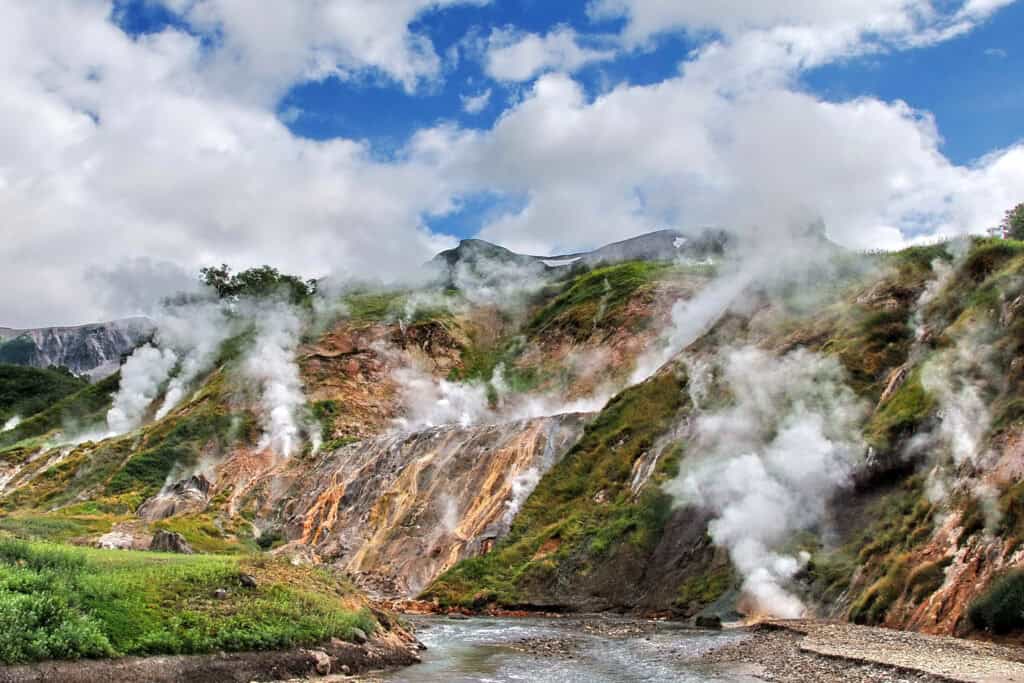
Located at the far eastern tip of Russia, the Kamchatka Peninsula is a geological wonderland featuring over 400 glaciers and 189 volcanoes, 29 of which are still active. The region is known for its dramatic, rugged beauty, with volcanic landscapes, hot springs, and geysers forming part of its unique charm. It is remote and largely undeveloped, adding to its appeal for those seeking adventure in isolation. The highest peak, Klyuchevskaya Sopka, rises to 15,580 feet and is one of the most active volcanoes in the world. The peninsula’s isolation and active geothermal features make it a challenging yet rewarding destination for adventurers. The region is home to unique wildlife, including brown bears and Steller’s sea eagles. Its untouched wilderness and active geothermal features make it a surreal experience for anyone visiting.
Belukha Mountain, Russia
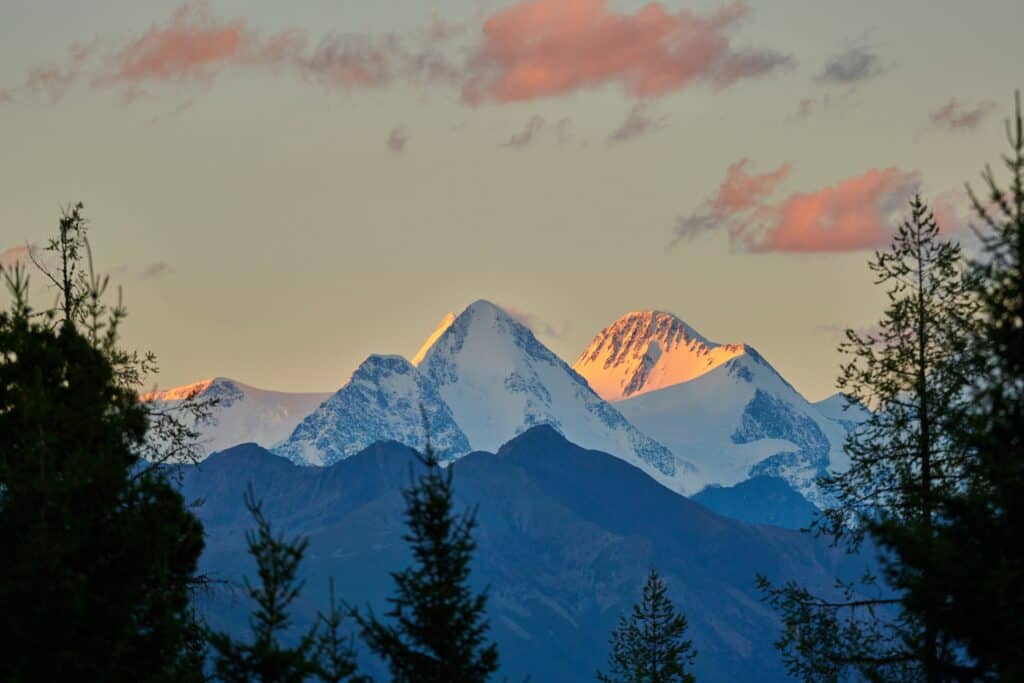
Belukha Mountain is the highest peak in the Altai Mountains, located on the border between Russia and Kazakhstan. This UNESCO World Heritage Site stands at 14,783 feet and is revered for its dramatic snow-capped peaks and glaciers. Climbing it is no easy feat, as the area is known for its unpredictable weather and remote location. The mountain’s eastern peak is considered the easier of the two summits, while the western peak requires more technical climbing skills. Surrounding it are picturesque valleys filled with alpine meadows, pristine rivers, and dense forests, making it an incredible destination for both climbers and nature lovers. It has been a significant site for spiritual seekers due to its mystical aura, and it remains an iconic symbol of the Altai region. The best time to explore the area is between July and September when weather conditions are more favorable.
Aconcagua, Argentina
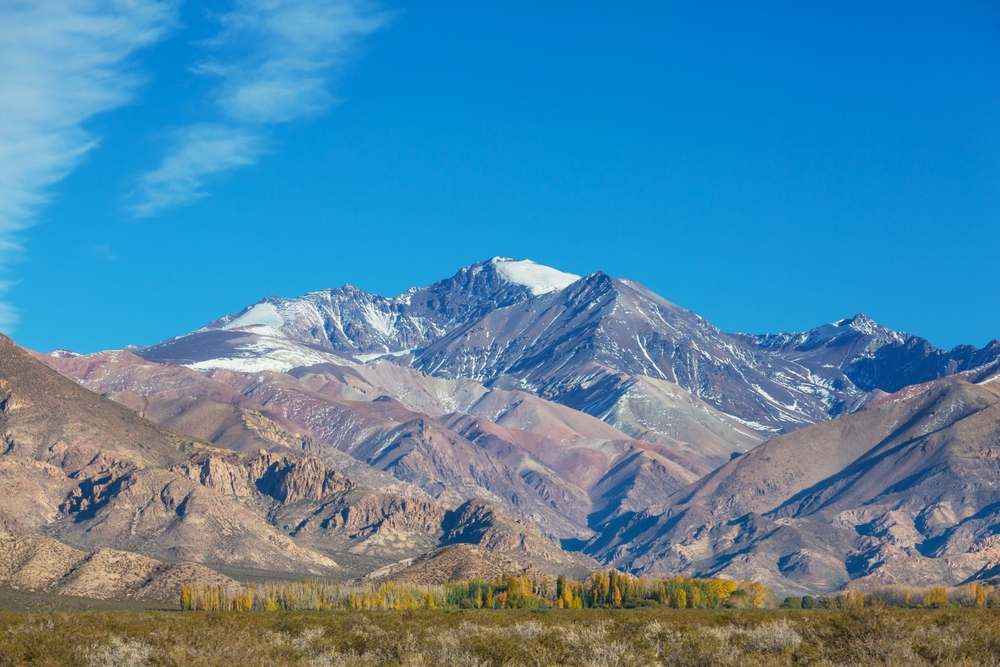
Aconcagua, part of the Andes Mountain range, stands at 22,841 feet, making it the highest peak in the Americas. Situated in Mendoza Province, Argentina, this dormant volcano is known for its challenging climb, with only 30-35% of climbers successfully reaching the summit. The mountain’s rugged terrain and extreme altitude make it one of the most difficult non-technical climbs in the world. The Valle de las Vacas and Valle de los Horcones surround it, providing breathtaking landscapes for hikers and climbers alike. Despite its dry, arid climate, the mountain’s beauty lies in its sheer magnitude and harsh, unforgiving environment. Climbing it typically requires a three-week expedition, allowing for acclimatization and multiple summit attempts. The best time to climb is from December to February when weather conditions are more stable.
Landmannalaugar Valley, Iceland
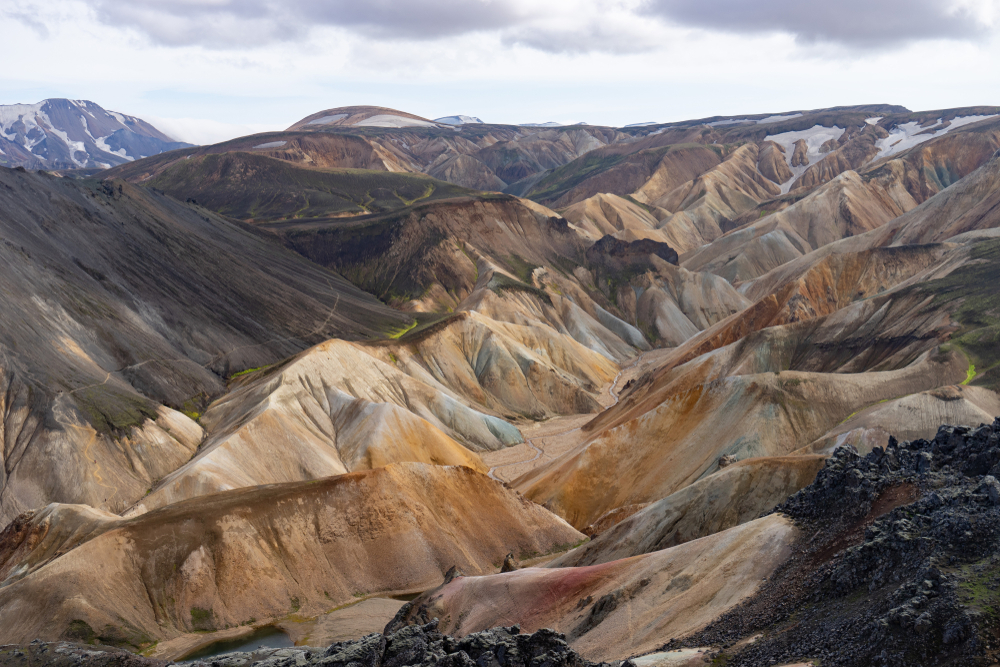
Landmannalaugar Valley, located in Iceland’s highlands, is renowned for its colorful rhyolite mountains, hot springs, and volcanic landscapes. The valley’s otherworldly terrain, shaped by geothermal activity, includes lava fields, mineral-streaked peaks, and bubbling hot springs, creating an almost surreal atmosphere. It’s a popular destination for hikers, with the Laugavegur Trek offering a four-day journey through some of Iceland’s most breathtaking landscapes. The vibrant colors of the mountains, ranging from reds to blues, and the valley’s geothermal energy make it a visual spectacle unlike any other place on Earth. The valley’s remoteness adds to its appeal, making it a peaceful escape from more tourist-heavy areas of Iceland. The best time to visit is during the summer months when the weather is more predictable, and the trails are accessible.
Zhangjiajie Mountains, China
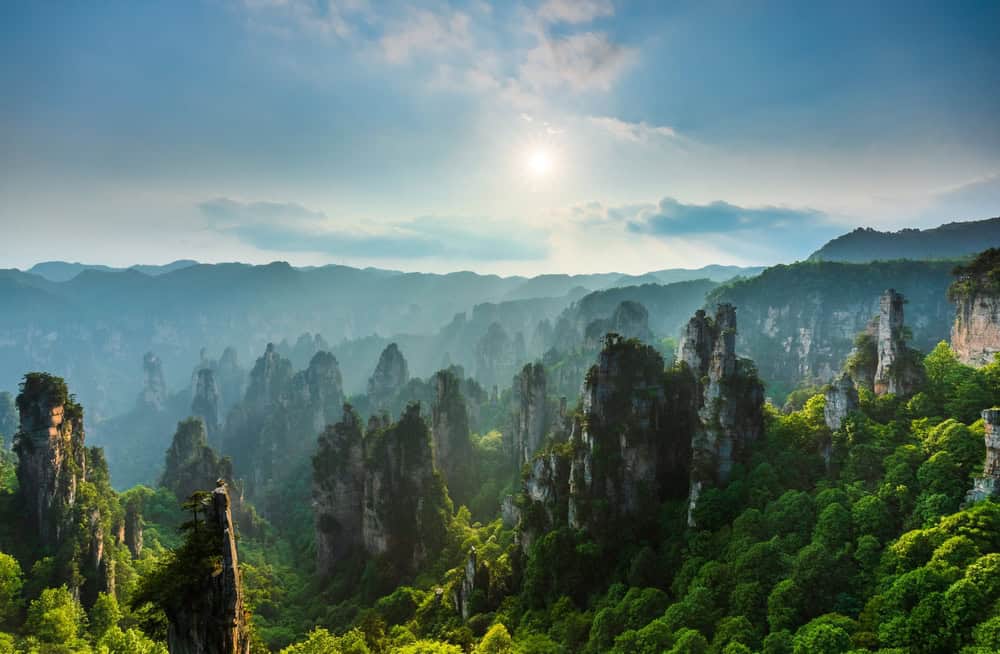
The Zhangjiajie Mountains in China’s Hunan Province are known for their towering sandstone pillars, some of which rise over 3,000 feet. These peaks are often shrouded in mist, giving the landscape a dreamlike quality. The area served as the inspiration for the floating mountains in the film Avatar. The Zhangjiajie National Forest Park, where these mountains are located, is a UNESCO World Heritage Site and is home to a variety of wildlife, including macaque monkeys. The park’s walking trails and glass bridges offer stunning views of the towering pillars and dense forests below. Visitors can also explore the Tianmen Mountain and its famed “Heaven’s Gate,” a naturally formed arch that adds to the mystical allure of the region. The best time to visit it is in the spring or fall when the weather is mild and the fog enhances the ethereal beauty of the peaks.
Monument Valley, USA
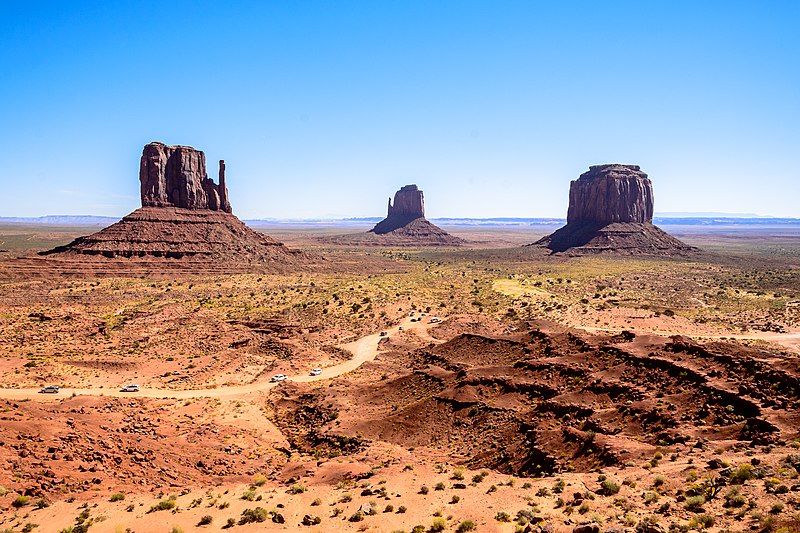
Monument Valley, located on the Arizona-Utah border, is famed for its towering red sandstone buttes that rise dramatically from the desert floor. These iconic rock formations, some standing as high as 1,000 feet, have been featured in numerous films and are symbols of the American West. The valley is part of the Navajo Nation, and visitors can explore its rugged beauty through guided tours led by Navajo guides. The vibrant red hue of the sandstone formations is particularly stunning at sunrise and sunset when the light casts dramatic shadows across the landscape. Its remote location adds to its mystique, offering visitors a sense of timelessness and solitude. The valley is best visited in the cooler months, as summer temperatures can soar to uncomfortable levels.
Ojos del Salado, Chile
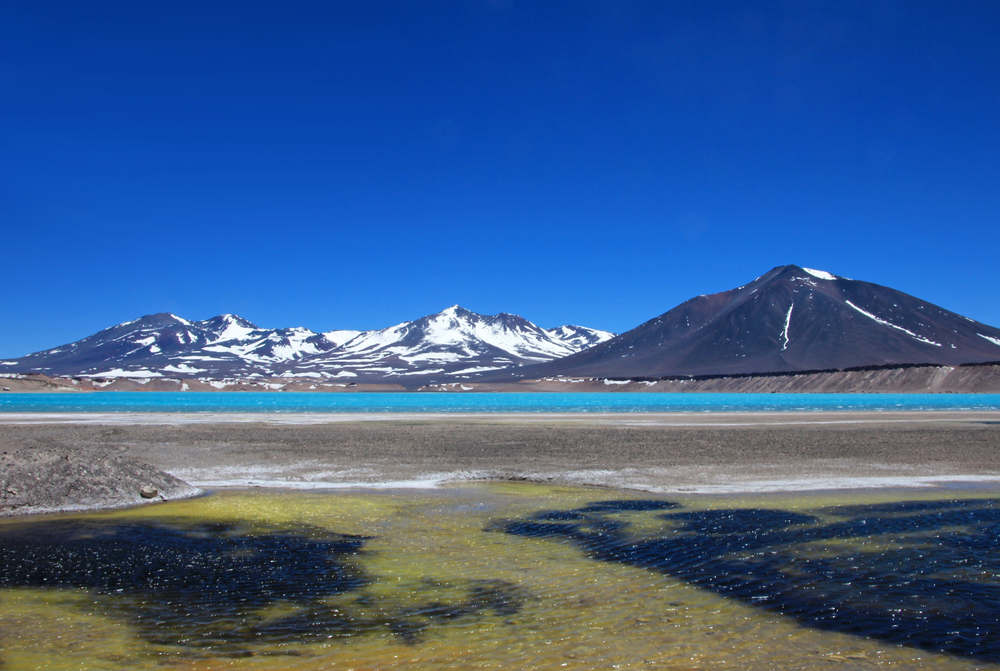
Ojos del Salado, straddling the border between Chile and Argentina, is the highest volcano in the world, reaching an elevation of 22,615 feet. Despite its extreme altitude, the climb to the summit is not technically difficult, making it accessible to experienced hikers. The region surrounding the volcano is known for its barren, desert-like landscape, with very little vegetation or wildlife. The dry air prevents the formation of glaciers, but snow can be found on the higher slopes. The volcano’s crater contains a small lake, making it one of the highest lakes in the world. The best time to climb it is during the dry season from November to March. The stark beauty of the surrounding Atacama Desert adds to the allure of this remote peak.
Mont Blanc, France/Italy
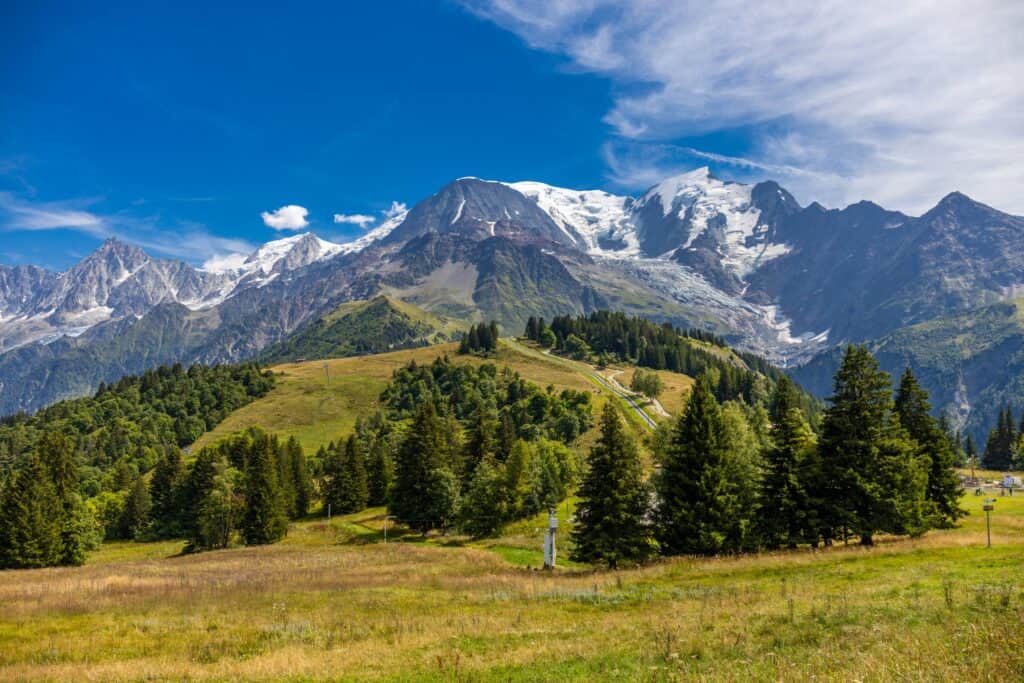
Mont Blanc, standing at 15,781 feet, is the highest peak in the Alps and Western Europe. Straddling the border between France and Italy, it is a popular destination for climbers and hikers alike. The mountain’s glaciers cover nearly 100 square kilometers, offering a stunning backdrop to the surrounding alpine scenery. Climbing it requires experience and preparation due to the challenging conditions at high altitudes. However, the views from the summit, which include sweeping vistas of the Alps, make the effort worthwhile. It has a rich history, with climbers attempting its summit as early as the 18th century. The best time to climb is during the summer months when the weather is more favorable.
Mount Elbrus, Russia

Mount Elbrus, located in the Caucasus Mountains of Russia, is the highest peak in Europe at 18,510 feet. This dormant volcano is known for its twin summits and extensive glaciation, offering a challenging yet non-technical climb. Despite its elevation, it is accessible to climbers of varying skill levels, with the south route being the most popular due to its infrastructure. The mountain’s rugged beauty and expansive glaciers make it a favorite among adventure seekers. Climbing Mount Elbrus typically requires a 10-14 day expedition, allowing for acclimatization. The best time to attempt the summit is from June to September when conditions are most favorable.
The Rwenzori Mountains, Uganda/Democratic Republic of Congo
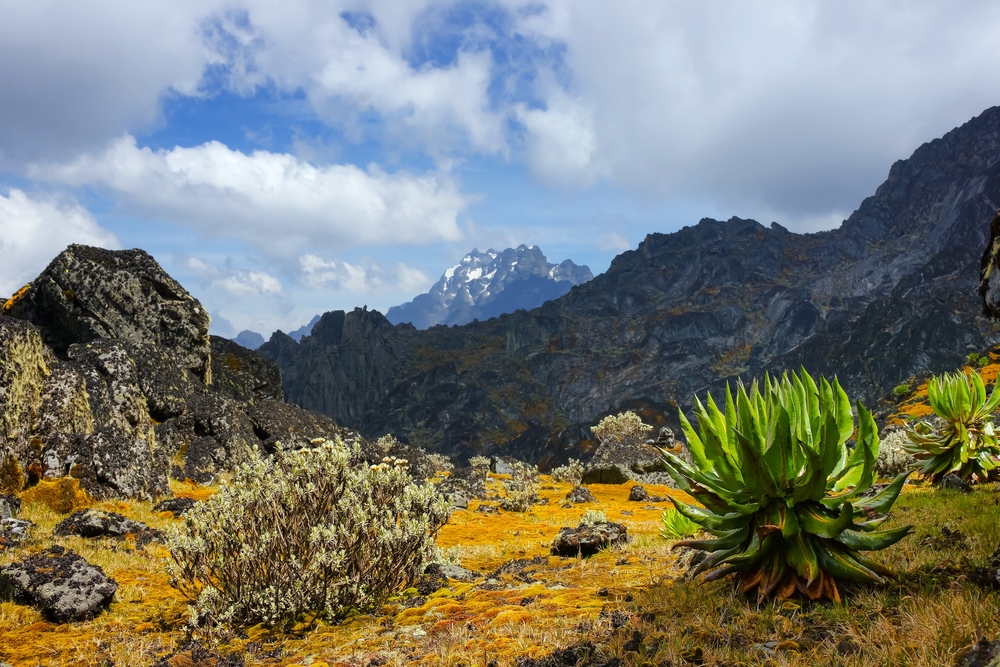
The Rwenzori Mountains, also known as the “Mountains of the Moon,” straddle the border between Uganda and the Democratic Republic of Congo. Rising up to 16,762 feet, Mount Stanley is the highest peak in the range, and its jagged, glacier-covered summits make it one of the most dramatic sights in Africa. Despite being near the equator, the Rwenzori Mountains have permanent snow and glaciers, thanks to their high altitude and unique climatic conditions. These mountains are part of the Rwenzori Mountains National Park, a UNESCO World Heritage Site, known for its biodiversity, including rare plant species like giant lobelias and heathers. Climbing it is not for the faint-hearted, as the terrain is often muddy, and the steep ascents can be challenging even for experienced hikers. However, those who make the effort are rewarded with views of pristine glaciers, waterfalls, and mist-shrouded valleys. The best time to visit the Rwenzori Mountains is during the dry seasons, from January to February and June to August. These peaks are also home to unique wildlife such as Rwenzori turacos and blue monkeys.
The Drakensberg Mountains, South Africa
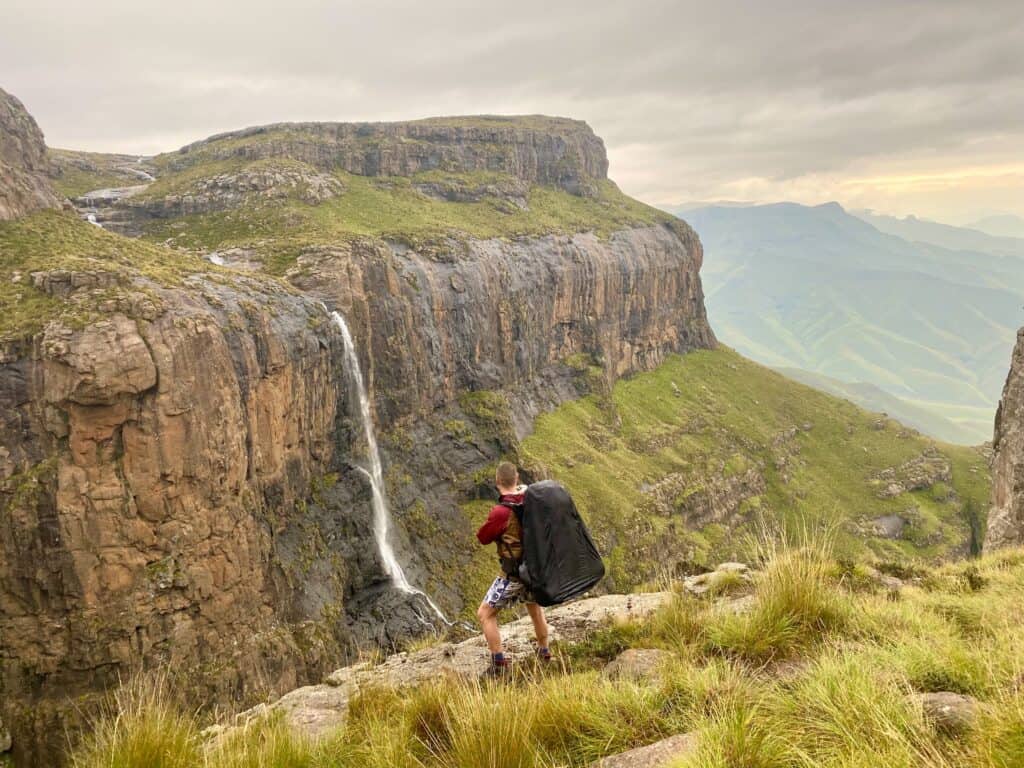
The Drakensberg Mountains, stretching over 620 miles across South Africa and Lesotho, offer some of the most spectacular scenery in southern Africa. Known locally as uKhahlamba, or “Barrier of Spears,” this range is famous for its steep cliffs, rugged peaks, and dramatic escarpments. The highest point, Thabana Ntlenyana, reaches 11,423 feet, making it the tallest mountain in southern Africa. The Drakensberg is a UNESCO World Heritage Site and is home to a wide range of wildlife, including baboons, eland, and endangered species like the bearded vulture. Hikers can explore a variety of trails, from gentle walks through lush valleys to more strenuous climbs up towering peaks. The region is also rich in history, with ancient San rock art scattered throughout its caves and shelters. It is a year-round destination, but the best time for hiking is during the cooler months from April to September. The mountain range also offers opportunities for rock climbing, fly fishing, and bird watching.
Mount Fitz Roy, Argentina
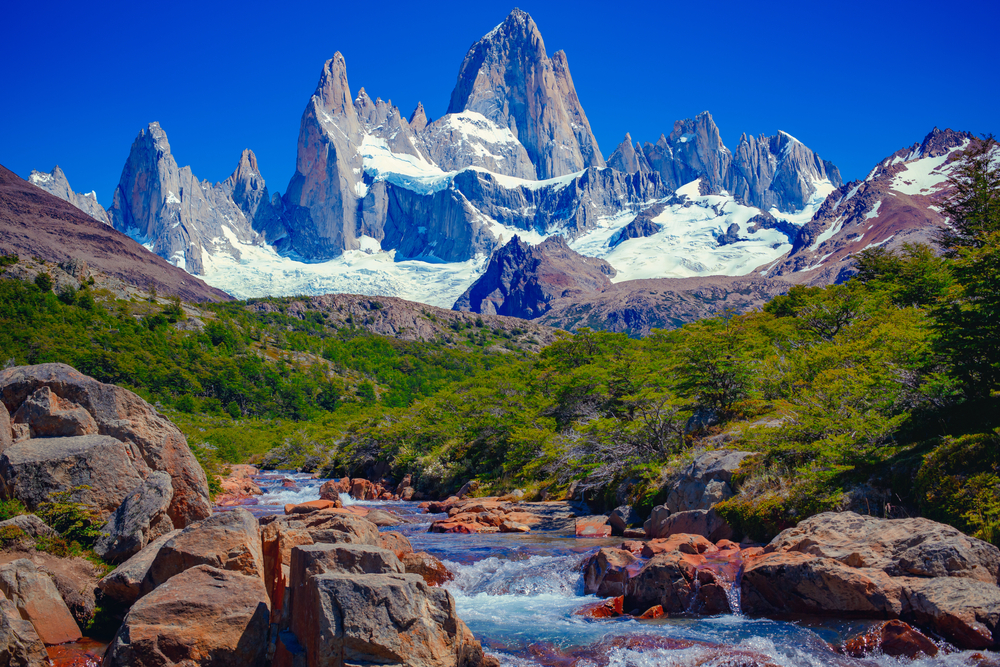
Mount Fitz Roy, located in the Southern Patagonian Ice Field on the border between Argentina and Chile, is one of the most iconic peaks in the world. Standing at 11,171 feet, its jagged granite spires rise dramatically above the surrounding glaciers and forests, creating a surreal landscape. The mountain is known for its extreme weather conditions, which can change rapidly, making it a challenging climb even for experienced mountaineers. Despite its relatively modest height compared to other peaks in the Andes, it is considered one of the most technically difficult mountains to climb. The surrounding area, including the town of El Chaltén, offers numerous trekking routes for those who prefer to admire the peak from a distance. The best time to visit it is from November to March, when the weather is more stable. The area is also home to stunning glacial lakes, such as Laguna de los Tres, which offer breathtaking views of the peak.
The Karakoram Range, Pakistan/China/India
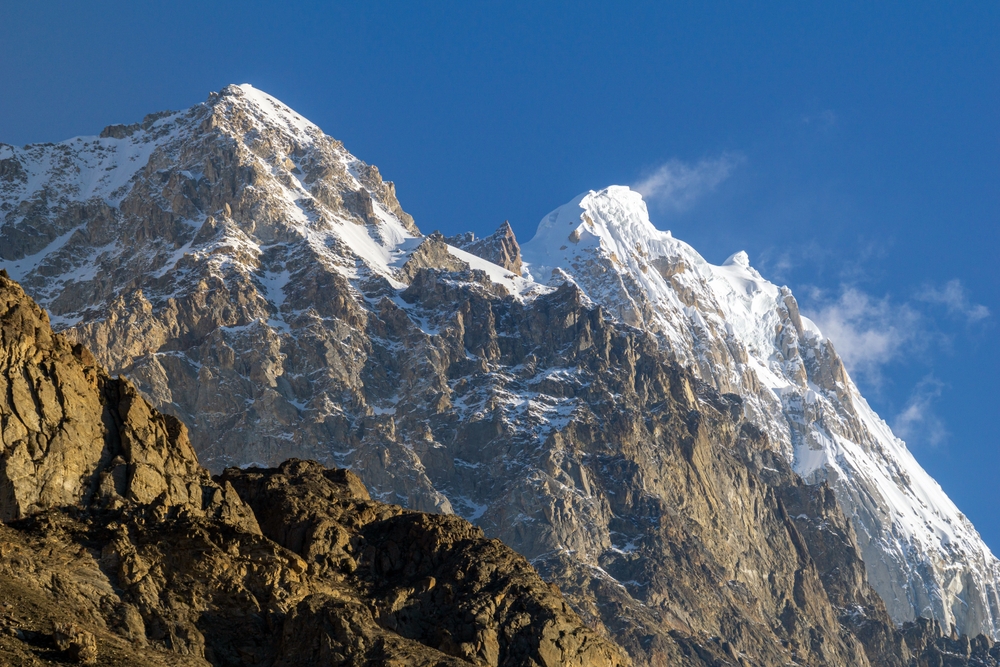
The Karakoram Range, stretching across Pakistan, China, and India, is home to some of the world’s highest peaks, including K2, the second-highest mountain on Earth. Known for its rugged terrain and dramatic glaciers, it is one of the most remote and inhospitable mountain ranges in the world. K2, standing at 28,251 feet, is notorious for being one of the most dangerous mountains to climb, with a high fatality rate among those attempting to reach its summit. The range is also home to the Baltoro Glacier, one of the largest glaciers outside the polar regions, and the towering Trango Towers, which are popular with rock climbers. You can even find unique wildlife, including snow leopards and ibex. The harsh environment and extreme weather make the Karakoram a destination for only the most adventurous travelers. The best time to visit it is during the summer months from June to August.
The Tien Shan Mountains, Central Asia
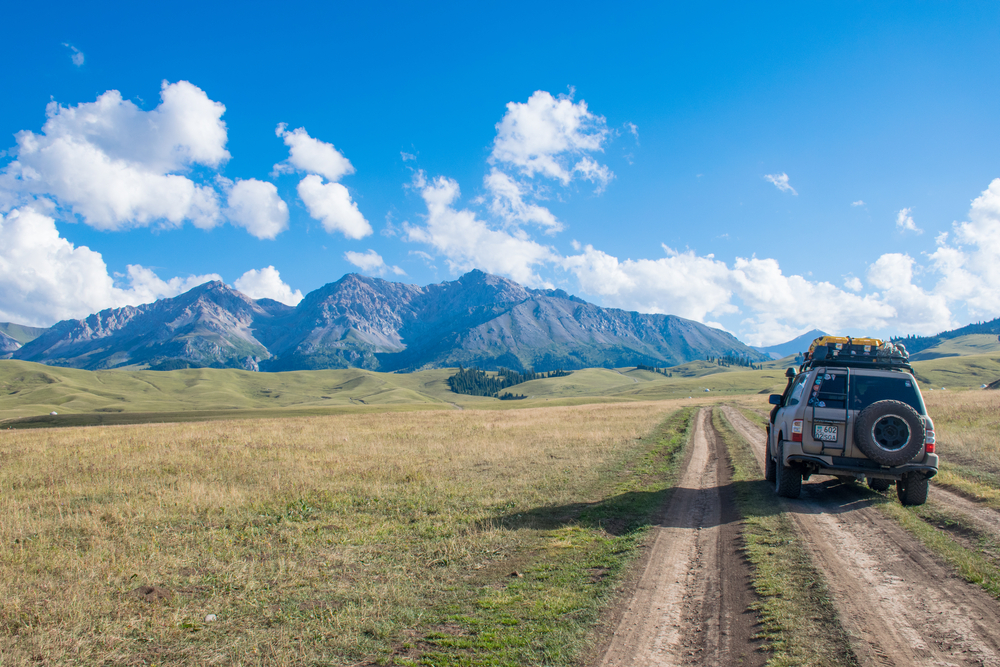
The Tien Shan Mountains, also known as the “Mountains of Heaven,” stretch across Central Asia, forming the natural border between China, Kazakhstan, and Kyrgyzstan. The highest peak in the range, Jengish Chokusu, stands at 24,406 feet, making it one of the tallest mountains in the region. The Tien Shan is known for its dramatic landscapes, which include towering peaks, deep valleys, and expansive glaciers. The range is also home to the largest glacier in the world outside the polar regions, the Inylchek Glacier. It is a UNESCO World Heritage Site and is home to diverse wildlife, including the elusive snow leopard and the Tian Shan brown bear. Hikers and climbers can explore a variety of trails, from gentle alpine meadows to challenging glacier crossings. The best time to visit the Tien Shan Mountains is from June to September, when the weather is more favorable for trekking. The region is also rich in cultural history, with ancient Silk Road routes passing through its valleys.
This article originally appeared on Rarest.org.
More from Rarest.org
15 Lesser-Known Species on the Brink of Extinction

Many species around the world are facing the threat of extinction, but not all of them are well-known. While efforts to save popular animals like pandas and tigers often make headlines, lesser-known species are quietly disappearing at an alarming rate. Read More.
12 Rare Mammals That Live in the World’s Tallest Mountains

High-altitude regions around the world are home to some of the most unique and uncommon mammals on the planet. They have adapted to survive in the harsh, cold, and rugged environments of the world’s tallest mountains. Read More.
10 Beautifully Preserved Ancient Cities Buried Beneath the Earth
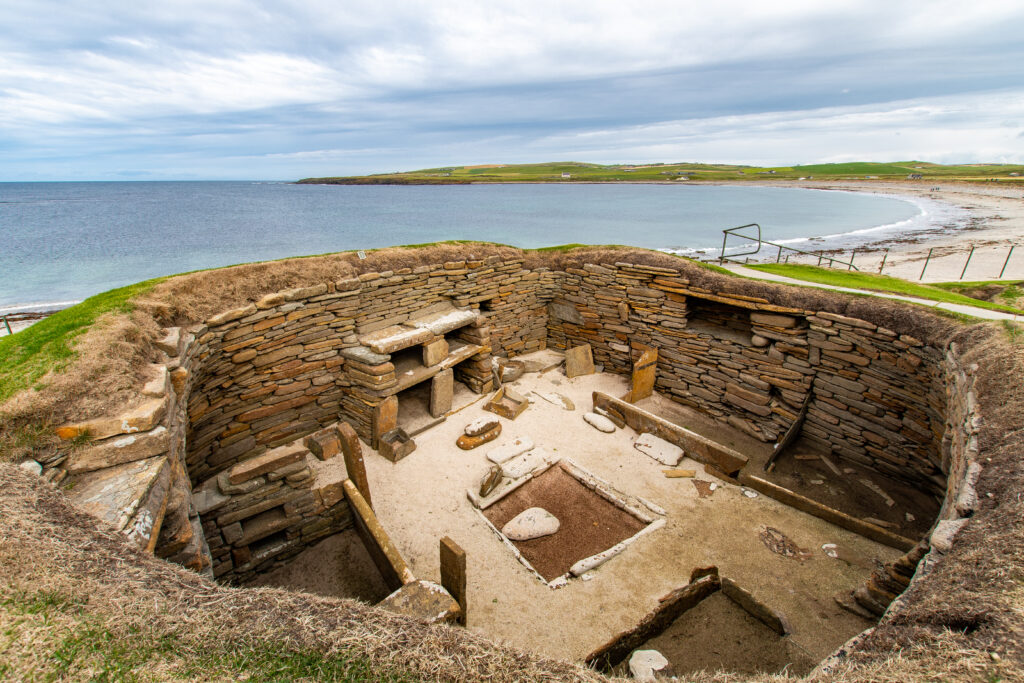
Ancient cities hold mysteries of civilizations long gone, hidden beneath the earth for centuries. These cities, once bustling with life, are now beautifully preserved time capsules of history. Read More.
